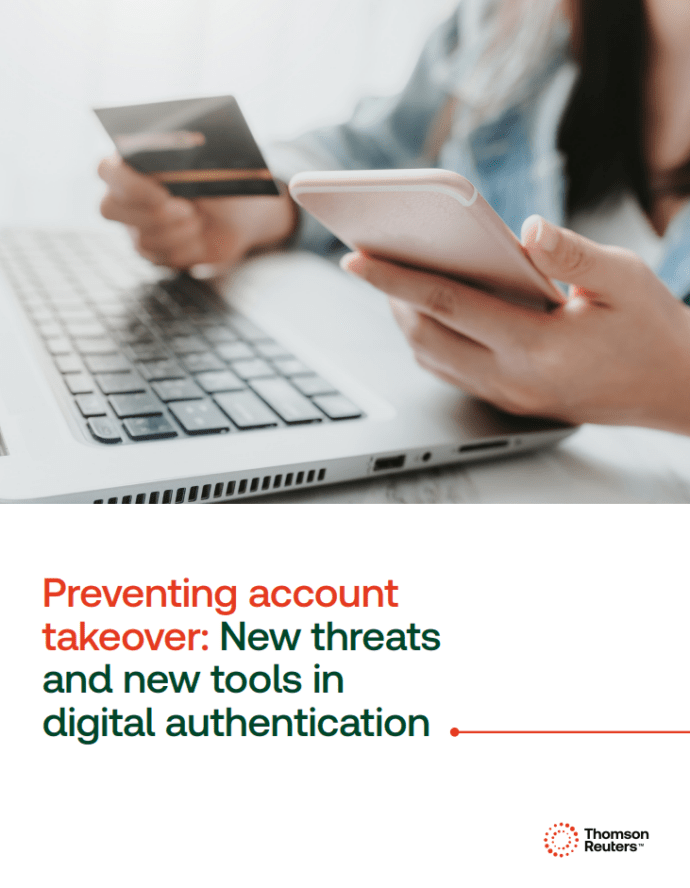Jump to ↓
| What is cyber risk management? |
| The cybersecurity risk management process |
| The importance of cyber risk management |
| Best practices for cyber risk management |
| Final words |
October is Cybersecurity Awareness Month. Perhaps that’s appropriate since October is also the month when people decorate their yards and houses with tombstones, ghosts, jack-o-lanterns, and other “scary” items. But to enterprises and organizations of all kinds, cybersecurity failures can be truly frightening.
According to the International Monetary Fund (IMF), cyberattacks have more than doubled since the pandemic. The financial services industry, one of the biggest targets of digital criminals, has experienced what the IMF calls “extreme losses” from cyber incidents totaling $2.5 billion in just one year.
Financial losses are just one reason—though a significant one—why businesses in all sectors need to continuously assess and strengthen their cyber risk management protocols. Cyber breaches can cause sensitive client and vendor data—including Social Security numbers and bank account information—to be stolen and exploited by fraudsters and other bad actors.
While scary, it doesn’t need to be frightening. Although many may be familiar with risk management framework and aware of the perils of data breaches, malware, ransomware, Internet of Things (IoT), and other cybersecurity threats, they may be less familiar with the concept of cyber risk management. It’s an approach to digital data security that is becoming increasingly relevant in today’s digital threat landscape, with organizations under intense pressure to develop and implement more effective strategies to protect their assets and data—and the data of their customers and vendors.
However, such strategies won’t be successful if they’re done incorrectly. Cyber risk management requires a disciplined, integrated, comprehensive approach to battling criminal online activity.
What is cyber risk management?
Cyber risk management, also called cybersecurity risk management, refers to the process of identifying, assessing, and mitigating risks to an organization’s IT infrastructure.
What makes cyber risk management so crucial is how fundamental information technology is to a company’s operations. In nearly every industry, organizations and enterprises depend on their IT networks to carry out key business functions. A successful attack can defraud an organization out of millions of dollars, knock critical systems offline, or wreak havoc in other ways, resulting in lost revenue, stolen data, long-term reputation damage, and regulatory fines.
One thing to make clear: A cyber risk management program cannot prevent all data security risks. Those risks are too numerous and (often) unpredictable. What cyber risk management can do is proactively reduce the likelihood and impact of the threats that the organization identifies as the most dangerous. These are determined by the business’s priorities, the construction of its network, and the financial and employee resources it can afford to devote to the risks.
The cybersecurity risk management process
Cyber risk management is a continuous process. Organizations need to constantly assess and adjust their programs because potential new threats will always arise—as will improved strategies to manage them. Despite the changes that might arise, the cyber risk management process generally follows these steps:
Identifying the risks
Risk mitigation begins with knowing what types of cyber threats are out there. Risk identification focuses on spotting potential risks before they can cause disruption. It also helps them to uncover events that might seem unlikely—but which could suddenly and disastrously take place. The threats that a cyber risk management program addresses include data breaches, malware, ransomware, and account takeover (ATO). Other risks include employee error and natural disasters (which can disrupt connectivity and other aspects of a company’s network). Yet another group of threats include network vulnerabilities, such as software flaws and weak points that hackers could exploit.
Another set of risks that many company cybersecurity teams will want to identify are those associated with stolen identities. Threat actors appearing to be trusted customers or vendors could gain access to the company’s IT system—then use that access for fraudulent purposes.
Analyzing the risks
Cybersecurity risk assessment analyzes each potential risk and measures its possible impacts. One of the most useful tools in this step is a risk assessment matrix, a type of risk analysis method, which measures the likelihood of risk from low to high on one axis and the risk’s potential severity from low to high on the other axis.
Managing the risks
A business objective of cyber risk management is to eliminate or at least avoid the highest-priority risks. Beefing up information security policies and protocols would be an example of a strategy for avoiding or reducing risk, such as the risk of fraud or a data breach. Again, a company can’t prevent all negative risk impacts. For lower-priority risks, the cyber risk management team and the executive decision-makers may determine that the costs of preventing or mitigating risks outweigh the costs of their potential impacts.
Reviewing the risks
Risk controls are essential in avoiding or reducing risks. Monitoring these threats also involves determining whether tactics for preventing or mitigating risk are working the way they are intended. A risk monitoring plan needs to be continually reviewed since the sources of risk are ever-changing. It also can benefit by including a risk communications policy that makes regular reporting to the organization’s senior leadership on how cyber risks are being managed.
 |
The importance of cyber risk management
Cyber risk management should be considered a key element of an overall operational risk management program and thus essential to the organization’s operational and financial well-being. However, without the proper planning, successful cyberattacks can fundamentally damage an organization.
What’s at stake
Financial losses
Any industry from supply chain, financial, health, to retail can be affected by cyber threats.
A 2024 FBI report claimed that cybercrime losses in the U.S. reached $12.5 billion in 2023, a record high. While most of these losses were related to investment fraud and email scams, businesses also have been hammered with significant losses. Case in point: Data breaches cost healthcare businesses alone an average of $9.77 million.
Legal ramifications
More and more states have established rigorous laws to protect data privacy. Violations of these laws and industry-specific data privacy regulations can result in significant fines.
Reputational damage
Financial losses aren’t the only danger a successful cyberattack poses. A company can lose the trust of its customers and vendors if it appears that it hasn’t been protecting their proprietary data.
Challenges
Along with these risks, cyber risk management processes have to deal with a number of significant challenges, including:
The rapidly evolving threat landscape
As soon as organizations install what they believe to be formidable data security defenses, cyber-criminals look for new ways to crack them. Perhaps the most dangerous new threat is the use of artificial intelligence to create “deepfake” emails and phone messages to fool employees into allowing criminals access to the company IT network. AI-driven password cracking could also become a powerful weapon in the hacker arsenals.
The need to keep up with changing regulations
In December 2023, the U.S. Securities and Exchange Commission released new rules regarding data security. These regulations primarily address the practices of publicly listed companies. Still, companies of all kinds should familiarize themselves with these rules as they develop and maintain a cyber risk management plan. Public companies, after all, often contract with smaller companies for software and components. As a result, a cyberattack affecting one company could impact others, whether they’re customers or vendors.
The shortage of skilled cybersecurity professionals
Seeing the statistics regarding IT layoffs at numerous large enterprises, organizations may believe that cybersecurity specialists seeking work are available in abundance. In fact, qualified cybersecurity talent is in short supply. This talent shortage may force companies to “downsize” their cyber risk management plans and focus even more narrowly on the most likely threats.
Time and resource constraints
One of the reasons why companies can’t stop all threats is because they simply don’t have the staff time and financial resources to dedicate to cyber risk management. This is one reason, of course, why prioritizing threats is part of cyber risk management plan.
Balancing security with business operations and user experience
An organization’s cyber risk reduction efforts shouldn’t result in a reduction in its operational efficiency. Nor should it make it harder for customers and vendors to interact with the business online. Everyone wants to be able to access the company’s IT network with a minimum of “friction.” Security protocols, such as those allowing (or forbidding) network access, have to be designed so that legitimate users aren’t slowed down but still keep threat actors out.
Benefits
Managing and balancing all these concerns and considerations might seem daunting. But the benefits of establishing a vigorous cyber risk management program make it worth the time and trouble. The benefits include:
- Enhanced protection of sensitive data and assets
- Better decision-making and resource allocation
- Improved regulatory compliance
- Increased stakeholder confidence
Best practices for cyber risk management
By identifying and acting upon these risks, benefits, and challenges, an organization’s cyber risk management team can develop a comprehensive cybersecurity strategy throughout the enterprise. One of the key goals of such a plan is to ensure if cyberattack does occur, the impact on clients, customers, or the organization’s operations is mitigated and minimized as much as possible.
Risk assessment framework
A risk assessment framework clearly defines the scope and objectives of the risk assessment and establish criteria for evaluating risk, including the likelihood of each cyberattack and its potential impact. An incident plan that is actionable can help prevent or reduce the impact potential threats.
An organization’s cyber risk management team should align the framework with the business’s overall risk management strategy. There are several models that an organization can consult as it crafts a cyber risk assessment framework. Some notable examples:
- The National Institute of Standards and Technology (NIST) Cybersecurity Framework. A U.S.-developed set of procedures and standards for businesses of all sizes.
- ISO/IEC 27001. This is an internationally developed cybersecurity standard.
- The Center for Internet Security’s Critical Security Controls. These cybersecurity best practices have been established to help organizations of all kinds create a framework for a cyber threat response plan that includes compliance with various industry regulations (such as HIPAA in the healthcare realm).
Regularly testing the network for flaws, and updating and patching systems
An organization’s IT department or security team should follow these practices as standard operating procedures. The enterprise’s cyber risk management team should ascertain that this is indeed being conducted as a cybersecurity protocol. Thus, audits should be part of security measures.
Employee training and awareness
Employees at nearly every level play an essential role in an enterprise’s cybersecurity strategy. That’s why companies should establish and maintain a rigorous training program of continuous education to help employees recognize phishing scams and other cyber threats they might be exposed to. This preventive program, which could include webinars, videos, or articles, should include regular updates on new threats and defensive tactics.
Integrating cyber risk management with anti-fraud technology
Since technology tools play an essential role in a company’s cybersecurity defenses, organizations should look for real-time solutions that can integrate with other digital platforms they use. This is particularly crucial when it comes to fraud prevention since fraud is often a hacker’s objective when attacking a business’s IT infrastructure. This also means that cybersecurity and anti-fraud teams need to integrate their efforts. Organizations can create a stronger proactive defense by integrating cybersecurity measures that combine strengthening network access points and fraud prevention strategies.
Final words
Given the ever-increasing peril of cybercrime, enterprises can’t look upon cyber risk management as a “nice to have” option. The potential financial and reputational losses are simply too great, the enemies too resourceful and relentless.
In today’s threat landscape, with cyber risks growing in number and ferocity, organizations need a proactive and adaptive approach that integrates anti-fraud teams, top management, IT personnel, technology platforms, and frontline employees.
Not all cyber risks can be avoided. But the most dangerous ones can be mitigated—and the business’s profitability and operational stability better protected.
 |
Thomson Reuters is not a consumer reporting agency and none of its services or the data contained therein constitute a ‘consumer report’ as such term is defined in the Federal Fair Credit Reporting Act (FCRA), 15 U.S.C. sec. 1681 et seq. The data provided to you may not be used as a factor in consumer debt collection decisioning, establishing a consumer’s eligibility for credit, insurance, employment, government benefits, or housing, or for any other purpose authorized under the FCRA. By accessing one of our services, you agree not to use the service or data for any purpose authorized under the FCRA or in relation to taking an adverse action relating to a consumer application.








